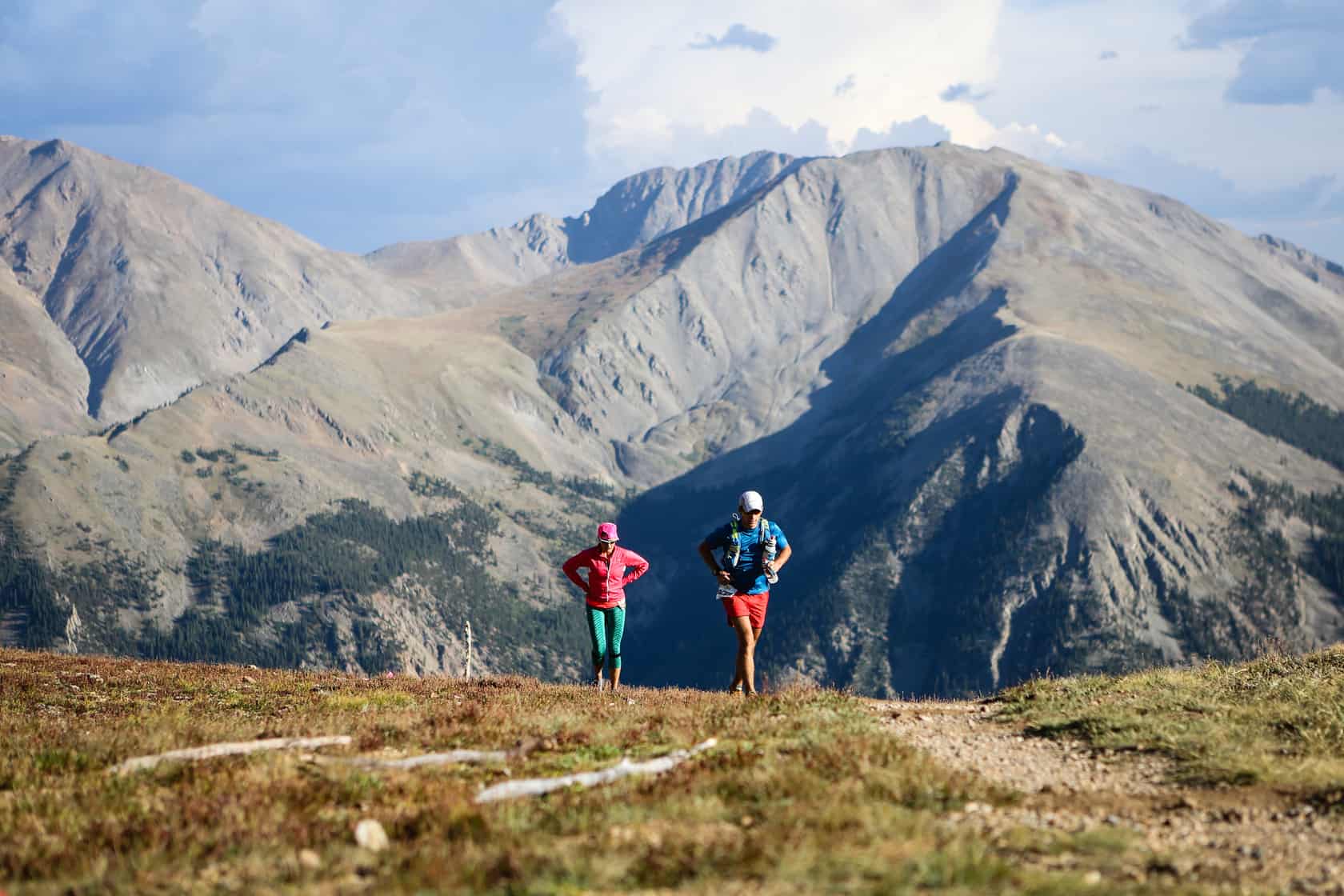"Seeing people finish makes me appreciate and remember why I run ultras," says ultrarunner Liza Howard. "100-milers can and should be about more than covering a long distance at a certain pace. They're a chance to practice suffering with grace, being humble, patient, kind--all of it.

The iconic Leadville Trail 100 began in 1983 as an economic boost for town. Nick-named “The Race Across the Sky,” is an out and back course, 50 miles out, 50 miles back, and twice up and over the infamous Hope Pass at miles 40 and 60. The cut off time for completing the race is 30 hours. Less than half of the runners who started the race in 2015 did not finish the journey.
“What you guys are all doing is detrimental to your bodies. I think you all know that. “ (Head of medical staff, at the pre-race briefing, to the whole group.) More than half of the runners who started the race in 2015 did not finish the journey.

The day before the race, a briefing is held in the gymnasium of the local high school. During the announcements, any and everyone who has helped with the race, has run the race before, or even those who are there for the first time, is asked to stand for applause–from the aid station captains to those who hold the course records, from those who have run this race ten times to those here for the first time, everyone is recognized during the meeting.
The race has grown significantly in past years; while many aspects of the race have changed, the spirit of its organizers is tangible. “The race meeting this year, and the race in general, just seemed like too many people on the trail. The meeting was the same with great energy and enthusiasm from the past race directors,” says ultrarunner Lisa Smith-Batchen.

On the day of the race, Leadville wakes up so early that the bars are still open. On race day, the town’s two coffee shops opened at 2:00 am to help caffeinate competitors and spectators alike. Aptly put by an employee at Cookies with Altitude, a local coffee (and cookie) shop: “We’ll be here all day, all night, all day again.”

The 4:00 am race start is jam-packed with energy, the air thick with quiet focus and the smell of coffee. The town is out to see the runners off, their breath clouding the air as they whoop, clanging cowbells as they send the blur of runners off into the night.
“Many of you will watch the sun rise twice during your race.” This sentence, repeated often by race officials to competitors, is spot on: even those aiming to finish in under 24 hours will see two sunrises during their 100 miles.

The race’s out-and-back course means the trails develop a road-like traffic flow; along the whole route, runners pass one another head-on. Energy levels vary wildly during this flow; some competitors pass each other silently, heads down in focus. Others cruise past blasting music, high-fiving and shouting encouragement to the oncoming competitors.

Hope Pass is infamous for being The Beast of the Leadville 100. Since the race is out-and-back, those competing have to tackle the climb twice–once on their way to Winfield, and once on their way back towards Leadville. At the top, euphoria mixes with exhaustion for many runners. 2,670 feet of gain up to Hope Pass beginning at 60 miles and 40 miles.
Winfield is the race’s halfway point, it’s a spectator-packed, family-filled, energetic holler-fest. The top competitors shoot in-and-out of the aid station pinball machine-style, straight in and straight back out.
Winfield is also where competitors are allowed to be joined by a pacer, i.e. a fellow runner who has agreed to complete a portion (or all) of the race’s final 50 miles with him or her. This makes for a funny juxtaposition of energies around Winfield; while the front pack of runners blitzes into the town, pacers for later-arriving racers lay sprawled in the grass, grabbing one last hour of sleep before an all-nighter accompanying friends back into Leadville.

“She’s the best pacer. Ever. I didn’t plan to have a pacer…I didn’t even ask. She just comes up to me at the aid station and goes, ‘hi! I have snacks! Do you need a pacer?’ So, now here we are.”
As the sun sinks so does the temperature; runners strap on their headlamps once again, preparing to take on the night as they descend Hope Pass and begin the stretch towards Twin Lakes. Outward Bound, the aid station at which runners clock 76 miles during their return journey, is alive all night. Race volunteers dance around the checkpoint with glow sticks, playing pop music under a cold, starry sky. Families and friends stand cocooned in sleeping bags, and campfires crackle throughout the field. “Your neighborhood at home is tracking your race and having a watch party. They’re calling me for updates.” (A friend to a runner at Outward Bound.)

“We did it! Let’s go to Leadville! Let’s get some beers!” (A runner upon arriving at the top of Hope Pass.)
Twenty-six and a half hours after the race’s start, 6:30 am rolls around in Leadville. The town is silent except for the Golden Burro Cafe; it’s closed, but inexplicably pumping piano music into the empty streets through an outdoor speaker. The streets are car-less, the sun is warming the air, and medal-sporting finishers wander back to their beds.
“Seeing people finish makes me appreciate and remember why I run ultras,” says ultrarunner Liza Howard. “100-milers can and should be about more than covering a long distance at a certain pace. They’re a chance to practice suffering with grace, being humble, patient, kind–all of it. So while I don’t feel as giddy as when I’ve run the race myself, I feel just as happy (and a lot less tired) because I’m surrounded by all the good things and the good people that brought me into ultrarunning in the first place.”


Sources:
http://leadville.com/history/winfield.htm
http://www.fs.usda.gov / re: Sheep Gulch/Hope Pass
http://fitwild.wpengine.com/news/leadville-colorado-10152-feet


























